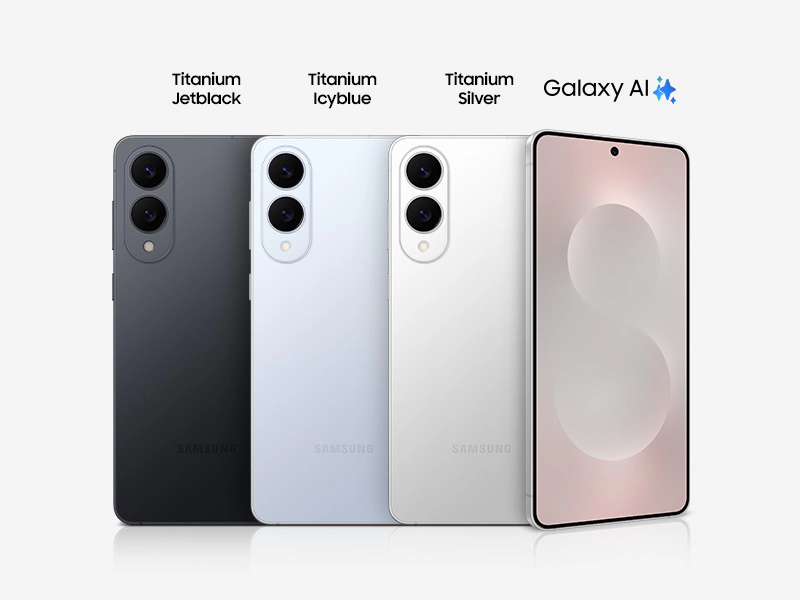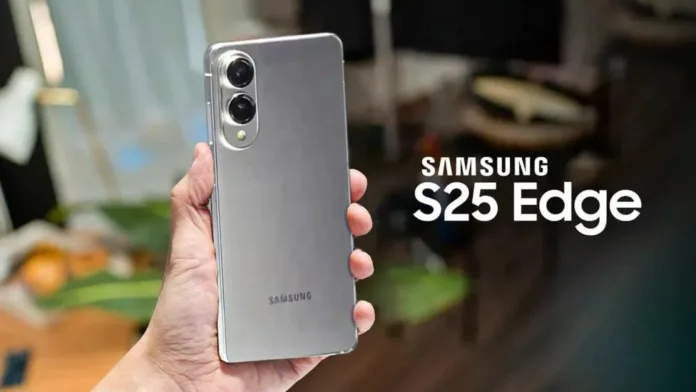The Article Tells The Story of:
- Samsung’s Thinnest Phone Yet—But at What Cost? The Galaxy S25 Edge is just 5.8mm thick, but this sleek frame forces Samsung to cut battery size and camera features.
- Premium Price, Missing Parts Priced at $1,100, the S25 Edge removes the telephoto lens and shrinks the battery—while keeping the flagship price tag.
- AI Power Inside a Slim Frame The phone packs the same Snapdragon 8 Gen 3 chip and Galaxy AI tools as pricier models, despite its small size.
- A Design That Hides the Trade-Offs… For Now Samsung claims the S25 Edge handles heat well and lasts 24 hours on video—but real-world tests will reveal the truth.
Samsung Galaxy S25 Edge: Samsung’s Thinnest Flagship Yet
Samsung has officially revealed the Galaxy S25 Edge. At just 5.8 millimeters thick, it is the slimmest device in the S25 series and the thinnest phone Samsung has ever made. The phone is now available for preorder and will launch on May 30. It starts at $1,100 with 256GB of storage.
The Galaxy S25 Edge follows Samsung’s plan to offer multiple flagship devices. It is not an Ultra model and not a foldable phone. Instead, the Edge introduces a thinner flagship option for users who want something light and sleek but still powerful. Samsung says the device will help drive mobile innovation, but that also means users will face some key trade-offs.
What Makes the Galaxy S25 Edge Different
The biggest change is the size. The Galaxy S25 Edge is just 5.8mm thick compared to the 6.4mm base S25. The Edge weighs 163 grams—only one gram more than the smaller S25—despite its larger 6.7-inch display. This thin, lightweight frame gives the phone a more compact feel for a large-screen device. It slips into pockets easily and feels lighter than it looks.
Samsung used a titanium frame to keep the weight low while increasing durability. It’s a similar approach to Apple’s design for the iPhone 15 Pro. Despite the size, the S25 Edge feels strong and well-balanced. There is no flex, and it does not feel top-heavy or fragile. The frame structure holds up well in hand.
However, not everyone wants a 6.7-inch screen. The display size makes the phone harder to manage for people with smaller hands. The base Galaxy S25 or Google’s Pixel 9 Pro may feel more comfortable in day-to-day use.
Camera Trade-Offs and Design Limitations
The Galaxy S25 Edge features a dual-camera setup. It includes a 200MP main sensor and a 12MP ultrawide lens. The ultrawide camera supports autofocus and macro photography. There is no telephoto lens. Samsung likely removed it to save space and reduce the thickness of the device.
Instead, users must rely on digital zoom using the 200MP sensor. While digital zoom helps in some cases, it cannot match the quality of an optical telephoto lens. Users who frequently shoot long-range photos may miss the extra lens.
The rear cameras are stacked vertically and protrude about 4.5mm. The camera bump breaks the clean profile of the phone, but it does not make the device feel off-balance. Samsung says it redesigned the camera unit to fit better into the slimmer body. Based on hands-on use, the phone feels sturdy and does not tip due to the lens weight.
The camera can record up to 8K video and includes Samsung’s latest AI photography tools. Users can remove unwanted objects with generative editing and improve audio in loud environments using Audio Eraser.
AI Features, Performance, and Software Support
The Galaxy S25 Edge runs on the same custom Snapdragon 8 Gen 3 chip as the base S25 and S25 Ultra. It includes 12GB of RAM and supports Galaxy AI. AI tools include Now Brief and Now Bar, which pull information from your apps to generate daily summaries, schedule alerts, and contextual suggestions.
Samsung has also integrated Google’s Gemini AI system. Users can activate Gemini Live to interact with their phone camera feed and ask real-time questions about their surroundings.
The phone will receive seven years of Android OS and security updates. That long-term support gives it an edge in the premium market and makes the device a better value for users who keep their phones for several years.
Thermal Management and Heat Control
To help with heat management inside the thin frame, Samsung added a new Thermal Interface Material (TIM). The company says this helps the device stay cool under heavy loads. Early tests during media previews didn’t show heat issues, but full performance testing will be required in future reviews to confirm its effectiveness.
Battery Life Is the Major Compromise
The biggest trade-off in the Galaxy S25 Edge is the battery. It has a 3,900mAh battery, which is small for a phone with a 6.7-inch screen and a $1,100 price tag. For comparison:
- The base Galaxy S25 has a 4,000mAh battery and a 6.2-inch screen.
- The Galaxy S25+ has a 4,900mAh battery and the same 6.7-inch screen size as the Edge.
Samsung says the S25 Edge can run video playback for up to 24 hours. That claim sounds impressive, but real-world performance may vary. Thinner phones leave less space for cooling and battery, so users may need to charge more often, especially when using AI features and high screen brightness.
Pricing, Colors, and Launch Details
Samsung will launch the Galaxy S25 Edge on May 30. The phone will come in three color options:

- Jet Black
- Silver
- Icy Blue
It starts at $1,100 for the 256GB version. There are no details yet about larger storage variants or exclusive color options.
Final Thoughts
The Galaxy S25 Edge pushes Samsung’s design in a new direction. It delivers a thin and light flagship phone with a large screen and powerful chip. But the trade-offs are clear. Users lose battery capacity and a telephoto camera lens. Those looking for longer battery life or full camera flexibility may prefer the Galaxy S25+ or S25 Ultra.
Still, the Edge stands out for its slim profile and premium feel. It shows that Samsung can build compact flagships without folding screens or major compromises in performance—at least on paper.
More in-depth testing will show whether the Edge’s thin frame holds up in daily use. Until then, it remains an interesting new option in Samsung’s growing list of premium phones.


